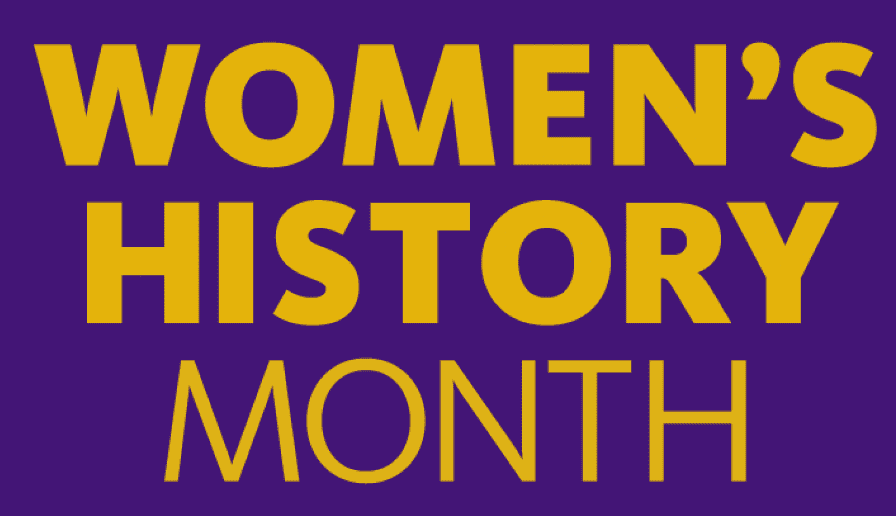
What can you do? Well at KS1, how about broadening the range of significant people you offer to the pupils to study. Why not go beyond Florence Nightingale and Mary Seacole who have featured in most school history curriculum at KS1 for many years now, and broaden out into looking at women’s role in the fields of science and aviation as well as nursing.
Whenever most worthy institutions exhort you to do this (not that we’re worthy of course!) they rarely offer resources to make it easy to teach and almost never give non-specialists really good fail-proof lessons that the pupils really enjoy. But we do. For an example of a female scientist to study, you can’t do much better than Mary Anning. You will find a detailed planner with six enquiries each supported by detailed lesson plans and all the resources-PowerPoints etc-to make it vivid and exciting in the classroom.
The same can be said for the study of a famous aviator Amy Johnson. Surely if you are studying the Wright brothers and the history of flight, you can find a space for her too. In addition the teaching of Rosa parks offers wonderful opportunities for drama (reconstructing the fateful day when she was arrested) as well as looking at her life, motivation and legacy. The topic of Grace Darling and her rescue has also worked brilliantly over the past 20 years.
Teaching women in history
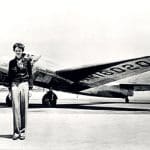 Amelia Earhart – KQ1 – Why do we think that Amelia was famous? - This introductory session starts with firing pupils’ curiosity via a slow reveal in which pupils build a picture of her by means of a series of clues introduced in a structured way. Pupils then complete a jigsaw information run in which they find answers to specific broader questions about the reasons for her fame before consolidating this by actively viewing… Read More
Amelia Earhart – KQ1 – Why do we think that Amelia was famous? - This introductory session starts with firing pupils’ curiosity via a slow reveal in which pupils build a picture of her by means of a series of clues introduced in a structured way. Pupils then complete a jigsaw information run in which they find answers to specific broader questions about the reasons for her fame before consolidating this by actively viewing… Read More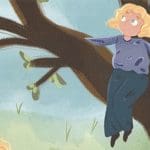 Amelia Earhart – KQ2 – What were the main events in Amelia’s life that shaped her ? - Having listened to an illustrated description of Amelia’s early life, pupils have to select suitable adjectives to describe her character using the odd-one-out options on the PowerPoint presentation to check their understanding Learning objectives Pupils are able to describe at least 3 revealing moments from Amelia’s early years They can select appropriate adjectives to describe Amelia’s character and can relate… Read More
Amelia Earhart – KQ2 – What were the main events in Amelia’s life that shaped her ? - Having listened to an illustrated description of Amelia’s early life, pupils have to select suitable adjectives to describe her character using the odd-one-out options on the PowerPoint presentation to check their understanding Learning objectives Pupils are able to describe at least 3 revealing moments from Amelia’s early years They can select appropriate adjectives to describe Amelia’s character and can relate… Read More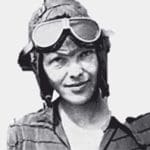 Amelia Earhart – KQ3 – Why was Amelia so keen to fly when so few women at the time were interested? - A relatively short session exploring Amelia’s motivation starts with pupils drawing on their prior knowledge to consider why she took such risks, followed by an analysis of a few simply worded quotes in her own words, then a teacher-in-role hot seating activity, finishing with a prioritising Diamond 4 activity which is recorded on a simple speech bubble sheet. Learning objectives… Read More
Amelia Earhart – KQ3 – Why was Amelia so keen to fly when so few women at the time were interested? - A relatively short session exploring Amelia’s motivation starts with pupils drawing on their prior knowledge to consider why she took such risks, followed by an analysis of a few simply worded quotes in her own words, then a teacher-in-role hot seating activity, finishing with a prioritising Diamond 4 activity which is recorded on a simple speech bubble sheet. Learning objectives… Read More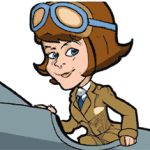 Amelia Earhart – KQ4 – What were the main ups and downs in Amelia’s life? - Using the living graph technique pupils sequence the events of Amelia’s flying career and then physically create points on a graph by deciding which events were good ones for Amelia and which were not. That way pupils learn to think about Amelia’s feelings, brining events to life. NB As this activity requires a lot of pupils moving, we recommend that… Read More
Amelia Earhart – KQ4 – What were the main ups and downs in Amelia’s life? - Using the living graph technique pupils sequence the events of Amelia’s flying career and then physically create points on a graph by deciding which events were good ones for Amelia and which were not. That way pupils learn to think about Amelia’s feelings, brining events to life. NB As this activity requires a lot of pupils moving, we recommend that… Read More Amelia Earhart – KQ5 – How do we know so much about Amelia’s life when she lived so long ago? - In this session pupils get to work as history detectives matching clues within sources to statements historians have made about Amelia. Using the active ‘prove it’ strategy, pupils in pairs visit a gallery of clues and try to work out which ones prove the statements to be true. Learning objectives Pupils build up an appreciation of the types of evidence… Read More
Amelia Earhart – KQ5 – How do we know so much about Amelia’s life when she lived so long ago? - In this session pupils get to work as history detectives matching clues within sources to statements historians have made about Amelia. Using the active ‘prove it’ strategy, pupils in pairs visit a gallery of clues and try to work out which ones prove the statements to be true. Learning objectives Pupils build up an appreciation of the types of evidence… Read More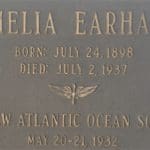 Amelia Earhart – KQ6 – What was Amelia’s greatest achievement and how should it be remembered? - Working towards the end goal of producing a book cover to encapsulate the key details of Amelia’s achievements, pupils learn, through a few short preparatory tasks, to discriminate between what is important and what peripheral. They also look at a range of ways that Amelia has been commemorated and come to a judgment about which are most fitting. Learning objectives… Read More
Amelia Earhart – KQ6 – What was Amelia’s greatest achievement and how should it be remembered? - Working towards the end goal of producing a book cover to encapsulate the key details of Amelia’s achievements, pupils learn, through a few short preparatory tasks, to discriminate between what is important and what peripheral. They also look at a range of ways that Amelia has been commemorated and come to a judgment about which are most fitting. Learning objectives… Read More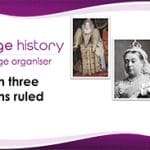 When three queens ruled knowledge organiser – KS1 - In this topic you are going to find out about three of the most famous queens that each ruled this country for a very long time. One lived nearly 500 years ago and one died very recently, so you will see how life has changed a lot over the centuries. The first of our queens, Elizabeth I, who never married… Read More
When three queens ruled knowledge organiser – KS1 - In this topic you are going to find out about three of the most famous queens that each ruled this country for a very long time. One lived nearly 500 years ago and one died very recently, so you will see how life has changed a lot over the centuries. The first of our queens, Elizabeth I, who never married… Read More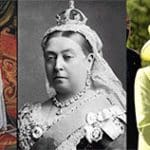 When three queens ruled – KQ1 – Which three queens of England are most remembered in history and why? - This active and entertaining first session aims to provide pupils with a clear chronological overview of the last 500 years into which they can insert their knowledge of Queen Elizabeth I, Queen Victoria and Queen Elizabeth II. Working with a range of types of information, pupils in groups have to respond to statements made about the three monarchs, ringing a… Read More
When three queens ruled – KQ1 – Which three queens of England are most remembered in history and why? - This active and entertaining first session aims to provide pupils with a clear chronological overview of the last 500 years into which they can insert their knowledge of Queen Elizabeth I, Queen Victoria and Queen Elizabeth II. Working with a range of types of information, pupils in groups have to respond to statements made about the three monarchs, ringing a… Read More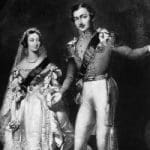 When three queens ruled – KQ3 – How do we know about the queens who lived so long ago? - Handling sources of evidence Having explored the range of visual sources available to historians studying the three queens, pupils actively try to match statements historians make to the sources they would have used, before going on to create a statement and supporting source of their own. Learning objectives Pupils can identify 4 different types of evidence and see that some… Read More
When three queens ruled – KQ3 – How do we know about the queens who lived so long ago? - Handling sources of evidence Having explored the range of visual sources available to historians studying the three queens, pupils actively try to match statements historians make to the sources they would have used, before going on to create a statement and supporting source of their own. Learning objectives Pupils can identify 4 different types of evidence and see that some… Read More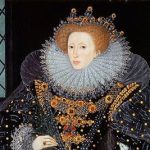 When three queens ruled – KQ4 – What important changes happened when each of the queens ruled? - Change / Significance Starting with 3 short video presentations, pupils go on to research the key changes from each of the reigns, focusing on those they think are most significant. Learning objective Pupils are able to identify 2 iconic events or changes that took place in each of the reigns Suggested approach Step 1 Children watch three short videos Focussing… Read More
When three queens ruled – KQ4 – What important changes happened when each of the queens ruled? - Change / Significance Starting with 3 short video presentations, pupils go on to research the key changes from each of the reigns, focusing on those they think are most significant. Learning objective Pupils are able to identify 2 iconic events or changes that took place in each of the reigns Suggested approach Step 1 Children watch three short videos Focussing… Read More When three queens ruled – KQ5 – How should we remember these famous queens? - Pupils explore a range of ways in which monarchs are commemorated, focusing on Queen Elizabeth II, before going onto design a set of three stamps which contain images of the most sigificant changes during their reigns. Learning objectives Pupils are able to cite at least 3 important ways in which monarchs from the past are commemorated They then select one… Read More
When three queens ruled – KQ5 – How should we remember these famous queens? - Pupils explore a range of ways in which monarchs are commemorated, focusing on Queen Elizabeth II, before going onto design a set of three stamps which contain images of the most sigificant changes during their reigns. Learning objectives Pupils are able to cite at least 3 important ways in which monarchs from the past are commemorated They then select one… Read More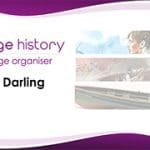 Grace Darling knowledge organiser – KS1 - You are learning about Grace Darling because at a young age she carried out a brave rescue and saved 9 men from a shipwreck. She was the daughter of a lighthouse keeper and was living in a lighthouse when she heard screams and cries from ship in trouble in a terrible storm. By rowing out that night with just her… Read More
Grace Darling knowledge organiser – KS1 - You are learning about Grace Darling because at a young age she carried out a brave rescue and saved 9 men from a shipwreck. She was the daughter of a lighthouse keeper and was living in a lighthouse when she heard screams and cries from ship in trouble in a terrible storm. By rowing out that night with just her… Read More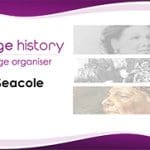 Mary Seacole knowledge organiser – KS1 - Mary was a remarkable lady best remembered for her work during the Crimean war (1853-1856) where she helped injured soldiers, even riding on horseback onto the actual battlefields. Although not a trained nurse, she knew how to make people better. She set up a place called the British hotel providing soldiers with dressings, food and drink and even a hug… Read More
Mary Seacole knowledge organiser – KS1 - Mary was a remarkable lady best remembered for her work during the Crimean war (1853-1856) where she helped injured soldiers, even riding on horseback onto the actual battlefields. Although not a trained nurse, she knew how to make people better. She set up a place called the British hotel providing soldiers with dressings, food and drink and even a hug… Read More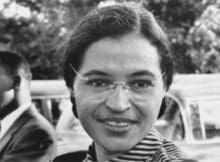 Rosa Parks – KQ1 – Can we work as history detectives to work out what Rosa Parks did that made her famous? - Pupils are pitched straight into the role as history detectives using mainly visual clues to piece together the possible reasons why Rosa Parks might be famous to then have their initial thoughts confirmed by a teacher told story of the seminal event of 1955 which pupils then act out. The lesson concludes with pupils actively watching a short video of… Read More
Rosa Parks – KQ1 – Can we work as history detectives to work out what Rosa Parks did that made her famous? - Pupils are pitched straight into the role as history detectives using mainly visual clues to piece together the possible reasons why Rosa Parks might be famous to then have their initial thoughts confirmed by a teacher told story of the seminal event of 1955 which pupils then act out. The lesson concludes with pupils actively watching a short video of… Read More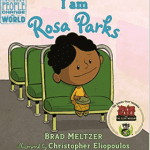 Rosa Parks – KQ2 -What can we learn about what sort of person Rosa was from stories of her early life? - Based on 3 key episodes from Rosa’s life, drawn from a lively story book, pupils act out 3 key episodes and have to select adjectives that best describe the aspects of Rosa’s character that each episode reveals. Learning objectives Children are able to offer suitably accurate adjectives and reject those that don’t fit They can support their view… Read More
Rosa Parks – KQ2 -What can we learn about what sort of person Rosa was from stories of her early life? - Based on 3 key episodes from Rosa’s life, drawn from a lively story book, pupils act out 3 key episodes and have to select adjectives that best describe the aspects of Rosa’s character that each episode reveals. Learning objectives Children are able to offer suitably accurate adjectives and reject those that don’t fit They can support their view… Read More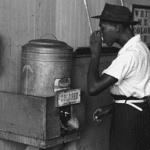 Rosa Parks – KQ3 – What was life like for black people living in southern USA in the 1950s? - This session looks at what life was like for Black people living in the southern parts of the United States in the 1950s. Back then, people didn’t always have the same rights, and some were treated unfairly because of the colour of their skin. Schools, buses, and even water fountains were often separated for Black and white people. This was… Read More
Rosa Parks – KQ3 – What was life like for black people living in southern USA in the 1950s? - This session looks at what life was like for Black people living in the southern parts of the United States in the 1950s. Back then, people didn’t always have the same rights, and some were treated unfairly because of the colour of their skin. Schools, buses, and even water fountains were often separated for Black and white people. This was… Read More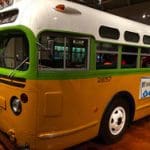 Rosa Parks – KQ4 – Why do you think Rosa acted as she did on that day that made her famous? - In this session pupils explore what drove Rosa to take her stand in December 1955, going beyond oversimplification of a tired seamstress to examining evidence that she was politically motivated. Learning objectives Children can offer relevant ideas as to Rosa’s motivation They can reject suggestions for her motivation that would not have been likely Some can see that… Read More
Rosa Parks – KQ4 – Why do you think Rosa acted as she did on that day that made her famous? - In this session pupils explore what drove Rosa to take her stand in December 1955, going beyond oversimplification of a tired seamstress to examining evidence that she was politically motivated. Learning objectives Children can offer relevant ideas as to Rosa’s motivation They can reject suggestions for her motivation that would not have been likely Some can see that… Read More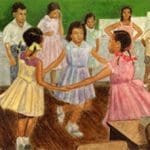 Rosa Parks – KQ5 – How did Rosa’s action lead to life for black people getting better? - Learning objectives Children can see how Rosa’s action led to other changes, both directly e.g. bus boycott or more indirectly e.g.in contributing to wider civil rights campaign They can distinguish between her achievements at the time and how they led to changes later. Activity 1 Muddled museum curator A new museum is just being set up to commemorate Rosa Parks’… Read More
Rosa Parks – KQ5 – How did Rosa’s action lead to life for black people getting better? - Learning objectives Children can see how Rosa’s action led to other changes, both directly e.g. bus boycott or more indirectly e.g.in contributing to wider civil rights campaign They can distinguish between her achievements at the time and how they led to changes later. Activity 1 Muddled museum curator A new museum is just being set up to commemorate Rosa Parks’… Read More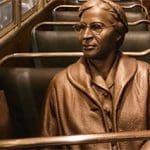 Rosa Parks – KQ6 – How should we remember Rosa Parks today? - Learning objectives Children are able to consider the most appropriate ways of celebrating Rosa’s achievements They can pick out the most significant change she brought about and summarise that on a plaque using a limited number of words. Activity 1 Pupils are invited to think of three ways in which Rosa might be remembered by children growing up today so… Read More
Rosa Parks – KQ6 – How should we remember Rosa Parks today? - Learning objectives Children are able to consider the most appropriate ways of celebrating Rosa’s achievements They can pick out the most significant change she brought about and summarise that on a plaque using a limited number of words. Activity 1 Pupils are invited to think of three ways in which Rosa might be remembered by children growing up today so… Read More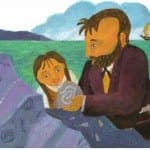 Mary Anning – KQ1 – Why do we remember Mary Anning? - This introductory session attempts to place Mary's life in a broader context of time and place and to whet pupils' appetite, without telling much of the story of her life. This follows in the next session. Key to the introduction is the use of sources from the time which will be referred to throughout the topic. Just as Mary carefully… Read More
Mary Anning – KQ1 – Why do we remember Mary Anning? - This introductory session attempts to place Mary's life in a broader context of time and place and to whet pupils' appetite, without telling much of the story of her life. This follows in the next session. Key to the introduction is the use of sources from the time which will be referred to throughout the topic. Just as Mary carefully… Read More Mary Anning – KQ2 – What did Mary do in her life that was so special? - Pupils move from the sequencing of the major events of Mary’s life to a more sophisticated understanding of which of these events were the most significant. By creating a fortunes or living human graph, pupils are able to see the ups and downs of her life and the important turning points. As they do so they build a growing admiration… Read More
Mary Anning – KQ2 – What did Mary do in her life that was so special? - Pupils move from the sequencing of the major events of Mary’s life to a more sophisticated understanding of which of these events were the most significant. By creating a fortunes or living human graph, pupils are able to see the ups and downs of her life and the important turning points. As they do so they build a growing admiration… Read More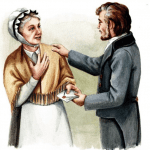 Mary Anning – KQ3 – What sort of person was Mary that helped her to succeed in a man’s world? - This a much shorter enquiry than the others, and comprises just three short activities Step 1 Having recapped the story of Mary’s life, ask pupils to work in small groups to generate adjectives to describe Mary’s character. Step 2 Pupils are then shown a list of pre-prepared adjectives on slide 2 of the Key question 3 PowerPoint. Which do they… Read More
Mary Anning – KQ3 – What sort of person was Mary that helped her to succeed in a man’s world? - This a much shorter enquiry than the others, and comprises just three short activities Step 1 Having recapped the story of Mary’s life, ask pupils to work in small groups to generate adjectives to describe Mary’s character. Step 2 Pupils are then shown a list of pre-prepared adjectives on slide 2 of the Key question 3 PowerPoint. Which do they… Read More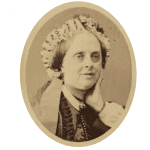 Mary Anning – KQ4 – Which other people were important in Mary’s life and why? - This activity is an interesting way of getting pupils to think about Mary’s life but in a non-narrative way. Instead of re-telling the story in sequence they have to look back over her life and to think about which characters played a significant role. The concentric circles technique allows pupils to offer their own perspectives and then listen to others’… Read More
Mary Anning – KQ4 – Which other people were important in Mary’s life and why? - This activity is an interesting way of getting pupils to think about Mary’s life but in a non-narrative way. Instead of re-telling the story in sequence they have to look back over her life and to think about which characters played a significant role. The concentric circles technique allows pupils to offer their own perspectives and then listen to others’… Read More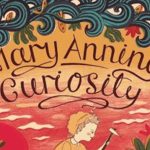 Mary Anning – KQ5 – How do we know about Mary’s actions which happened so long ago? - The main activity in this session is called Prove it! A number of pieces of evidence from Mary’s time are placed around the room, as if it were an art gallery. Pupils are given 10 statements about Mary’s life, provided as RS1 but are they true? Can we believe them? Are they backed up with evidence? Let’s put our history… Read More
Mary Anning – KQ5 – How do we know about Mary’s actions which happened so long ago? - The main activity in this session is called Prove it! A number of pieces of evidence from Mary’s time are placed around the room, as if it were an art gallery. Pupils are given 10 statements about Mary’s life, provided as RS1 but are they true? Can we believe them? Are they backed up with evidence? Let’s put our history… Read More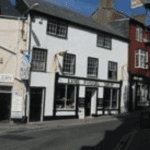 Mary Anning – KQ6 – How and why should Mary Anning be remembered? Have your say. - In Lyme Regis they are going to improve their museum dedicated to Mary Anning. It will cost a lot of money and the Council are not sure she deserves all this money being spent on her. Pupils have been asked by the locals to write a letter explaining just why she was SO important. Pupils initially brainstorm and then snowball… Read More
Mary Anning – KQ6 – How and why should Mary Anning be remembered? Have your say. - In Lyme Regis they are going to improve their museum dedicated to Mary Anning. It will cost a lot of money and the Council are not sure she deserves all this money being spent on her. Pupils have been asked by the locals to write a letter explaining just why she was SO important. Pupils initially brainstorm and then snowball… Read More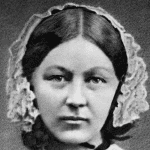 Florence Nightingale – KQ1 – Why do we think Florence Nightingale is remembered? - Pupils make deductions from a range of visual clues to see if they can work out what job Florence Nightingale did, before being told the story of her life through an illustrated PowerPoint presentation. Selected slides are then used to consolidate pupils’ ability to sequence the key events in her life. Learning objectives Children are able to make deductions… Read More
Florence Nightingale – KQ1 – Why do we think Florence Nightingale is remembered? - Pupils make deductions from a range of visual clues to see if they can work out what job Florence Nightingale did, before being told the story of her life through an illustrated PowerPoint presentation. Selected slides are then used to consolidate pupils’ ability to sequence the key events in her life. Learning objectives Children are able to make deductions… Read More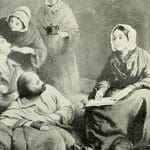 Florence Nightingale – KQ2 – Why did Florence place herself in such danger by going to the Crimea? - Who influenced her decision to go? Already introduced to the major events in Florence’s life, children now speculate on why she took the brave decision to go to the Crimea. Thinking creatively, they discuss who might have influenced her decision positively and negatively, using a short video and teacher-in-role as Florence to help them, and then have to decide who… Read More
Florence Nightingale – KQ2 – Why did Florence place herself in such danger by going to the Crimea? - Who influenced her decision to go? Already introduced to the major events in Florence’s life, children now speculate on why she took the brave decision to go to the Crimea. Thinking creatively, they discuss who might have influenced her decision positively and negatively, using a short video and teacher-in-role as Florence to help them, and then have to decide who… Read More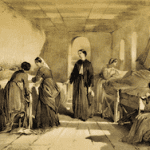 Florence Nightingale – KQ3a – Fighting Fit. What did Florence do to improve the lives of the soldiers when she arrived in the Crimea? - In this lesson children compare the appalling conditions in the hospitals on Florence’s arrival at Scutari. With the help of animated rats! They list the most significant problems and then compare with a hospital which had been transformed by Florence. They annotate a famous painting and then write a letter from Florence explaining the sort of changes she introduced, using… Read More
Florence Nightingale – KQ3a – Fighting Fit. What did Florence do to improve the lives of the soldiers when she arrived in the Crimea? - In this lesson children compare the appalling conditions in the hospitals on Florence’s arrival at Scutari. With the help of animated rats! They list the most significant problems and then compare with a hospital which had been transformed by Florence. They annotate a famous painting and then write a letter from Florence explaining the sort of changes she introduced, using… Read More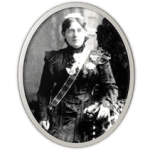 Florence Nightingale – KQ3b – Smart task – What did people really think of Florence Nightingale? - Learning objectives children can respond in role showing awareness of differing attitudes to Florence they can judge whether each group would approve of giving Florence a medal Starter Start by slowly revealing a picture of the medal awarded to Florence (slide 2) and asking children to speculate what it might be as the various parts are revealed. Ask the question;… Read More
Florence Nightingale – KQ3b – Smart task – What did people really think of Florence Nightingale? - Learning objectives children can respond in role showing awareness of differing attitudes to Florence they can judge whether each group would approve of giving Florence a medal Starter Start by slowly revealing a picture of the medal awarded to Florence (slide 2) and asking children to speculate what it might be as the various parts are revealed. Ask the question;… Read More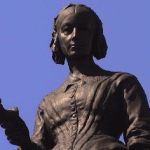 Florence Nightingale – KQ4a – What was Florence Nightingale’s greatest achievement? - Pupils have been drafted in to help with the wording on a statue to Florence Nightingale which had badly worn away over time and is now in danger of being indecipherable. But there is room for only 30 words on the new plaque. Which words shall we use to sum up Florence’s achievements? Her name and the dates of when… Read More
Florence Nightingale – KQ4a – What was Florence Nightingale’s greatest achievement? - Pupils have been drafted in to help with the wording on a statue to Florence Nightingale which had badly worn away over time and is now in danger of being indecipherable. But there is room for only 30 words on the new plaque. Which words shall we use to sum up Florence’s achievements? Her name and the dates of when… Read More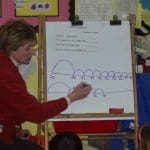 Florence Nightingale – KQ4b – Florence Nightingale’s days are numbered. Brilliant cross-curricular History and Mathematics - Every so often you see an inspiring example of history and numeracy working together seamlessly. Such a lesson was taught by Ros Boulton of South Farnborough Infants. She wanted her children to do far more than draw a simple timeline of Florence Nightingale’s life. She wanted them to make one, and to scale!! This was ambitious - all that glue… Read More
Florence Nightingale – KQ4b – Florence Nightingale’s days are numbered. Brilliant cross-curricular History and Mathematics - Every so often you see an inspiring example of history and numeracy working together seamlessly. Such a lesson was taught by Ros Boulton of South Farnborough Infants. She wanted her children to do far more than draw a simple timeline of Florence Nightingale’s life. She wanted them to make one, and to scale!! This was ambitious - all that glue… Read More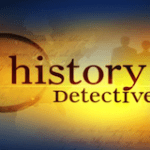 Florence Nightingale – KQ5 – How do we know so much about Florence Nightingale when she lived so long ago? - This differentiated core activity is Prove it! Working in pairs as detectives with their own find the clue sheets and clipboards, pupils are given 10 statements about Florence and have to find the original sources that helped historians to make these statements. These pictorial sources are placed around the room, as if an art gallery. Introduction Pupils are asked how… Read More
Florence Nightingale – KQ5 – How do we know so much about Florence Nightingale when she lived so long ago? - This differentiated core activity is Prove it! Working in pairs as detectives with their own find the clue sheets and clipboards, pupils are given 10 statements about Florence and have to find the original sources that helped historians to make these statements. These pictorial sources are placed around the room, as if an art gallery. Introduction Pupils are asked how… Read More Florence Nightingale – KQ6 – Should Florence Nightingale rather than Mary Seacole have her statue at St.Thomas’ hospital? - NB This lesson overlaps, as you would expect, with a similar lesson on Mary Seacole. It is slightly different in emphasis but if you are studying both women in equal depth you need to use Key question 6 from just one. If you are studying just Florence Nightingale and not Mary Seacole, then you will clearly need to modify the… Read More
Florence Nightingale – KQ6 – Should Florence Nightingale rather than Mary Seacole have her statue at St.Thomas’ hospital? - NB This lesson overlaps, as you would expect, with a similar lesson on Mary Seacole. It is slightly different in emphasis but if you are studying both women in equal depth you need to use Key question 6 from just one. If you are studying just Florence Nightingale and not Mary Seacole, then you will clearly need to modify the… Read More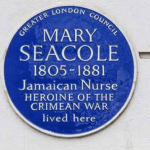 Mary Seacole – KQ1 – How can we work out why Mary Seacole is famous? - This session focuses on working out WHY Mary Seacole is commemorated today 200 years after she was born, and looks at the different ways in which she is remembered. The debate about whether she, or Florence Nightingale, better deserves a statue outside St.Thomas’ hospital is returned to in KQ6 Learning objectives Children are able to draw conclusions from simple visual… Read More
Mary Seacole – KQ1 – How can we work out why Mary Seacole is famous? - This session focuses on working out WHY Mary Seacole is commemorated today 200 years after she was born, and looks at the different ways in which she is remembered. The debate about whether she, or Florence Nightingale, better deserves a statue outside St.Thomas’ hospital is returned to in KQ6 Learning objectives Children are able to draw conclusions from simple visual… Read More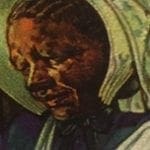 Mary Seacole – KQ2 – What were the most important events in Mary’s life? - Pupils watch a short film to establish the outlines of the story and then have to sequence a differentiated set of images of the key events of her life. They finish by discussing which events were the most significant in Mary’s life and identifying turning points. Learning objectives Pupils can sequence key events in Mary’s life They can explain… Read More
Mary Seacole – KQ2 – What were the most important events in Mary’s life? - Pupils watch a short film to establish the outlines of the story and then have to sequence a differentiated set of images of the key events of her life. They finish by discussing which events were the most significant in Mary’s life and identifying turning points. Learning objectives Pupils can sequence key events in Mary’s life They can explain… Read More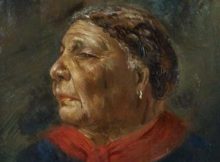 Mary Seacole – KQ4 – How did life change for Mary after the Crimean war? - Pupils create a fortunes graph showing the highs and lows of Mary’s life after the Crimea, identify a key turning point in her fortunes, and then consider ways in which Mary was helped when she fell on hard times. Learning objectives Pupils are able to sequence events of Mary’s life immediately following the end of the Crimean war They… Read More
Mary Seacole – KQ4 – How did life change for Mary after the Crimean war? - Pupils create a fortunes graph showing the highs and lows of Mary’s life after the Crimea, identify a key turning point in her fortunes, and then consider ways in which Mary was helped when she fell on hard times. Learning objectives Pupils are able to sequence events of Mary’s life immediately following the end of the Crimean war They… Read More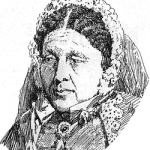 Mary Seacole – KQ5 – What made Mary so special? - A short session aimed at generating adjectives to capture the special qualities that Mary had and to provide examples of where she exhibited those characteristics. Learning objectives - Pupils can list at least 3 adjectives to describe her distinctive character - Pupils understand that Mary was exceptionally kind and comforting but was also dynamic. - They appreciate that Mary paid… Read More
Mary Seacole – KQ5 – What made Mary so special? - A short session aimed at generating adjectives to capture the special qualities that Mary had and to provide examples of where she exhibited those characteristics. Learning objectives - Pupils can list at least 3 adjectives to describe her distinctive character - Pupils understand that Mary was exceptionally kind and comforting but was also dynamic. - They appreciate that Mary paid… Read More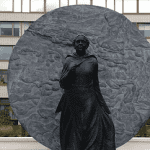 Mary Seacole – KQ6 – Why doesn’t everyone agree that Mary deserves her statue at St. Thomas’ hospital? - This lesson places pupils in the role of Mantle of the Expert. A new monument to Mary Seacole was erected outside St Thomas Hospital in 2016 . But there have been complaints. Surely it was Florence who was associated with St Thomas’ hospital, not Mary. Doesn’t Florence deserve a statue more? So, should the statue be replaced? The pupils are… Read More
Mary Seacole – KQ6 – Why doesn’t everyone agree that Mary deserves her statue at St. Thomas’ hospital? - This lesson places pupils in the role of Mantle of the Expert. A new monument to Mary Seacole was erected outside St Thomas Hospital in 2016 . But there have been complaints. Surely it was Florence who was associated with St Thomas’ hospital, not Mary. Doesn’t Florence deserve a statue more? So, should the statue be replaced? The pupils are… Read More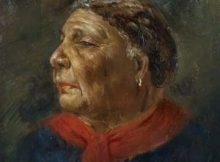 What the latest biography of Mary Seacole tells us - In Helen Rappaport’s latest book “In Search of Mary Seacole: Making of a cultural icon", we are told how Mary’s significance has only truly come to light and been properly recognised in the last 50 years. The book makes 9 points you might want to share with your children-most of which you probably already cover, so this will make you… Read More
What the latest biography of Mary Seacole tells us - In Helen Rappaport’s latest book “In Search of Mary Seacole: Making of a cultural icon", we are told how Mary’s significance has only truly come to light and been properly recognised in the last 50 years. The book makes 9 points you might want to share with your children-most of which you probably already cover, so this will make you… Read More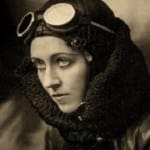 Guidance for teaching Amy Johnson as a Famous Person in Key Stage 1 - This study of a significant individual has been designed to form part of a broader topic on a similar theme which is one of the key requirements of the current National Curriculum for history. It can also be covered as discrete topic in its own right, especially as it presents a positive image of female achievement in the male dominated… Read More
Guidance for teaching Amy Johnson as a Famous Person in Key Stage 1 - This study of a significant individual has been designed to form part of a broader topic on a similar theme which is one of the key requirements of the current National Curriculum for history. It can also be covered as discrete topic in its own right, especially as it presents a positive image of female achievement in the male dominated… Read More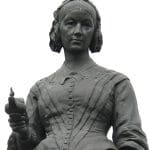 Smart task Florence Nightingale and Mary Seacole: Who said it? / Who am I? - This simple task encourages children to spot the differences between Florence Nightingale and Mary Seacole. With a large A4 image of Florence on one side, and Mary Seacole on the other, you sit with a pack of cards which contain statements made by, or about, one of the two nurses. The children have to guess which and explain their choice. … Read More
Smart task Florence Nightingale and Mary Seacole: Who said it? / Who am I? - This simple task encourages children to spot the differences between Florence Nightingale and Mary Seacole. With a large A4 image of Florence on one side, and Mary Seacole on the other, you sit with a pack of cards which contain statements made by, or about, one of the two nurses. The children have to guess which and explain their choice. … Read More Are you teaching the right things about Mary Seacole to your children? 10 things to be sure to teach - Are you teaching the right things about Mary Seacole to your children? 10 things to be sure to teach: 1. Mary was not a nurse as pupils would understand the term She learned about holistic medicine from her mother who was a ‘doctress’ who understood the healing properties of plants. She also gained experience of military life, as her father… Read More
Are you teaching the right things about Mary Seacole to your children? 10 things to be sure to teach - Are you teaching the right things about Mary Seacole to your children? 10 things to be sure to teach: 1. Mary was not a nurse as pupils would understand the term She learned about holistic medicine from her mother who was a ‘doctress’ who understood the healing properties of plants. She also gained experience of military life, as her father… Read More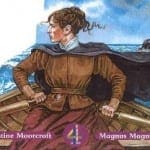 Grace Darling – KQ1 – Setting up the enquiry – What did Grace do that made her famous …and why is she remembered today? - This is the first lesson on an enquiry into Grace Darling: what she did, and why she was famous. The kernel of the lesson is a slow reveal activity which works really well on an Interactive White Board. The key image comes from the front cover of Channel 4's excellent book on Grace Darling in the Famous People series. Pupils are shown… Read More
Grace Darling – KQ1 – Setting up the enquiry – What did Grace do that made her famous …and why is she remembered today? - This is the first lesson on an enquiry into Grace Darling: what she did, and why she was famous. The kernel of the lesson is a slow reveal activity which works really well on an Interactive White Board. The key image comes from the front cover of Channel 4's excellent book on Grace Darling in the Famous People series. Pupils are shown… Read More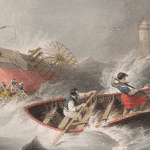 Grace Darling – KQ2 – Why did Grace Darling act in the way she did? - An active lesson in which pupils generate adjectives and then use a Diamond-4 ranking activity, followed by hot seating, to ascertain Grace’s motivation. A broader context is achieved by asking pupils to analyse the possible reasons why Grace was seen as particularly famous at the time. Which do the pupils think were important, not so important or downright made up?!… Read More
Grace Darling – KQ2 – Why did Grace Darling act in the way she did? - An active lesson in which pupils generate adjectives and then use a Diamond-4 ranking activity, followed by hot seating, to ascertain Grace’s motivation. A broader context is achieved by asking pupils to analyse the possible reasons why Grace was seen as particularly famous at the time. Which do the pupils think were important, not so important or downright made up?!… Read More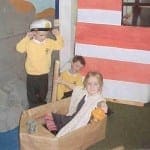 Grace Darling – KQ3 – Did Grace Darling really carry out the brave rescue on her own? - This Year 1 lesson on historical interpretations starts with a stark comparison of 2 images of the rescue showing very different detail. Pairs of pupils are then given 1 of 5 other picture versions which they have to turn into a mime to highlight the differences to the rest of the class. So which is true? The children look at… Read More
Grace Darling – KQ3 – Did Grace Darling really carry out the brave rescue on her own? - This Year 1 lesson on historical interpretations starts with a stark comparison of 2 images of the rescue showing very different detail. Pairs of pupils are then given 1 of 5 other picture versions which they have to turn into a mime to highlight the differences to the rest of the class. So which is true? The children look at… Read More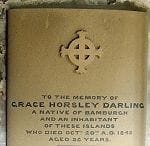 Grace Darling – KQ4 – How do we know about Grace Darling’s actions which happened so long ago? - There are two distinct elements to this session. Firstly, pupils develop a sense of period and of evidence by thinking about the sources historians would use to find out about Grace Darling. Secondly, pupils act as history detectives, hunting down the clues which support the statements about Grace made in the textbooks. Learning objectives Children understand that we have newspaper… Read More
Grace Darling – KQ4 – How do we know about Grace Darling’s actions which happened so long ago? - There are two distinct elements to this session. Firstly, pupils develop a sense of period and of evidence by thinking about the sources historians would use to find out about Grace Darling. Secondly, pupils act as history detectives, hunting down the clues which support the statements about Grace made in the textbooks. Learning objectives Children understand that we have newspaper… Read More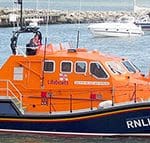 Grace Darling – KQ5 – How did sea rescue improve as a result of Grace Darling’s story? - This session comprises 2 principal activities: matching descriptions of lifeboats to time periods to deepen pupils’ sense of change, continuity and chronology; sequencing and then selecting images for a Museum about most significant changes to sea rescue since Grace Darling's time. Learning objectives Children can describe two ways in which sea rescue improved Children can match then and now statements… Read More
Grace Darling – KQ5 – How did sea rescue improve as a result of Grace Darling’s story? - This session comprises 2 principal activities: matching descriptions of lifeboats to time periods to deepen pupils’ sense of change, continuity and chronology; sequencing and then selecting images for a Museum about most significant changes to sea rescue since Grace Darling's time. Learning objectives Children can describe two ways in which sea rescue improved Children can match then and now statements… Read More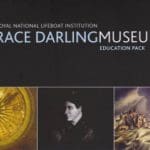 Grace Darling – KQ6 – How should we remember Grace Darling? - This last key question of 6 on the medium-term planning, focuses on her legacy and why we should commemorate her. It introduces pupils to a number of ways in which people are remembered before inviting them to use their creative imaginations to come up with a suitable idea of their own. Learning objectives children can mention some appropriate ways of… Read More
Grace Darling – KQ6 – How should we remember Grace Darling? - This last key question of 6 on the medium-term planning, focuses on her legacy and why we should commemorate her. It introduces pupils to a number of ways in which people are remembered before inviting them to use their creative imaginations to come up with a suitable idea of their own. Learning objectives children can mention some appropriate ways of… Read More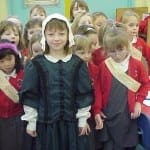 Florence Nightingale and Mary Seacole SMART TASK - Who said it? / Who am I? This simple task encourages children to spot the differences between Florence Nightingale and Mary Seacole. With a large A4 image of Florence on one side, and Mary Seacole on the other, you sit with a pack of cards which contain statements made by, or about, one of the two nurses. The children have… Read More
Florence Nightingale and Mary Seacole SMART TASK - Who said it? / Who am I? This simple task encourages children to spot the differences between Florence Nightingale and Mary Seacole. With a large A4 image of Florence on one side, and Mary Seacole on the other, you sit with a pack of cards which contain statements made by, or about, one of the two nurses. The children have… Read More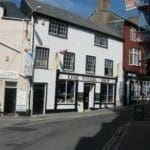 Why should Mary Anning be remembered? Have your say. SMART TASK - In Lyme Regis they are going to improve their Museum dedicated to Mary Anning. It will cost a lot of money and the Council are not sure she deserves all this money being spent on her. You have been asked by the locals to write a letter explaining just why she was SO important. Pupils initially brainstorm and then snowball… Read More
Why should Mary Anning be remembered? Have your say. SMART TASK - In Lyme Regis they are going to improve their Museum dedicated to Mary Anning. It will cost a lot of money and the Council are not sure she deserves all this money being spent on her. You have been asked by the locals to write a letter explaining just why she was SO important. Pupils initially brainstorm and then snowball… Read More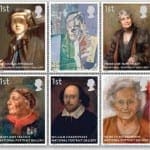 Mary Seacole – How should we remember her? - This lesson is the second featuring Mary Seacole. In the first her role was compared with Florence Nightingale's. The focus now shifts to asking two key questions: which was Mary Seacole's greatest achievement ; why is she not remembered as well as Florence? Learning objectives children can list a range of achievements of Mary and begin to make a… Read More
Mary Seacole – How should we remember her? - This lesson is the second featuring Mary Seacole. In the first her role was compared with Florence Nightingale's. The focus now shifts to asking two key questions: which was Mary Seacole's greatest achievement ; why is she not remembered as well as Florence? Learning objectives children can list a range of achievements of Mary and begin to make a… Read More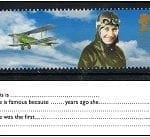 Amy Johnson – KQ1 – Why do you think Amy Johnson was famous? - With the help of the slow reveal of the clues in carefully arranged order, pupils build their knowledge of Amy Johnson's significance and write their own brief caption to accompany a new set of stamps commemorating her achievement. Learning objectives Pupils are able to make inferences from visual clues and can link back a generation to the work of the… Read More
Amy Johnson – KQ1 – Why do you think Amy Johnson was famous? - With the help of the slow reveal of the clues in carefully arranged order, pupils build their knowledge of Amy Johnson's significance and write their own brief caption to accompany a new set of stamps commemorating her achievement. Learning objectives Pupils are able to make inferences from visual clues and can link back a generation to the work of the… Read More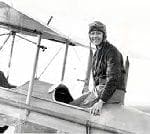 Amy Johnson – KQ2 – How did Amy the secretary end up being the first woman to fly to Australia? - This short, fun activity using mime and props, tells the story of Amy Johnson's first flight to Australia in a way that children will never forget. Each of the 8 steps of the story has its own mime and props (we provide the ideas, you the actual props!). Having heard you tell the story (outline provided as RS1 below), pupils… Read More
Amy Johnson – KQ2 – How did Amy the secretary end up being the first woman to fly to Australia? - This short, fun activity using mime and props, tells the story of Amy Johnson's first flight to Australia in a way that children will never forget. Each of the 8 steps of the story has its own mime and props (we provide the ideas, you the actual props!). Having heard you tell the story (outline provided as RS1 below), pupils… Read More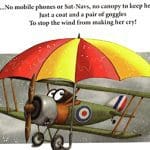 Amy Johnson – KQ3 – Why was flying to Australia so difficult for Amy Johnson? - Having heard the story of Amy Johnson's life, pupils are now asked to focus their attention on explaining why it was such a difficult feat for Amy to achieve at that time. Can they think of any ideas themselves before working out from clues on the PowerPoint the reasons why Amy’s journey proved hazardous? Recommended reading Little Wings: The Story… Read More
Amy Johnson – KQ3 – Why was flying to Australia so difficult for Amy Johnson? - Having heard the story of Amy Johnson's life, pupils are now asked to focus their attention on explaining why it was such a difficult feat for Amy to achieve at that time. Can they think of any ideas themselves before working out from clues on the PowerPoint the reasons why Amy’s journey proved hazardous? Recommended reading Little Wings: The Story… Read More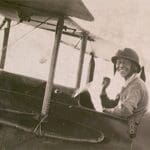 Amy Johnson – KQ4 – How did people react to Amy Johnson’s famous flight? - How did people react to Amy at the time, and how do we know? Children generate adjectives to describe Amy’s arrival in Australia using a photograph and short newspaper extracts and then are given 10 statements which they have to prove using a gallery of evidence. Learning objectives Pupils grasp that Amy quickly became a celebrity. They can glean information… Read More
Amy Johnson – KQ4 – How did people react to Amy Johnson’s famous flight? - How did people react to Amy at the time, and how do we know? Children generate adjectives to describe Amy’s arrival in Australia using a photograph and short newspaper extracts and then are given 10 statements which they have to prove using a gallery of evidence. Learning objectives Pupils grasp that Amy quickly became a celebrity. They can glean information… Read More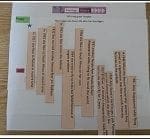 Amy Johnson – KQ5 – How did things change for Amy Johnson after her famous flight? - Was Amy really successful for the rest of her life? A Living graph Smart Task KQ5 The focus here is on the ups and downs of Amy’s life, in the ten years after her famous flight to Australia. Step 1 Give pupils an envelope containing a set of eleven dated events on strips of paper (provided as RS1-sequencing strips). For… Read More
Amy Johnson – KQ5 – How did things change for Amy Johnson after her famous flight? - Was Amy really successful for the rest of her life? A Living graph Smart Task KQ5 The focus here is on the ups and downs of Amy’s life, in the ten years after her famous flight to Australia. Step 1 Give pupils an envelope containing a set of eleven dated events on strips of paper (provided as RS1-sequencing strips). For… Read More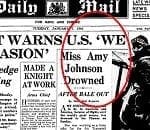 Amy Johnson – KQ6 – How can we solve the mystery of what happened to Amy Johnson? - This enduring mystery has puzzled historians for over 75 years. New evidence has just come to light which makes this an ideal opportunity for pupils to explore reasons for themselves. Clearly pupils will not be capable of adding fresh ideas: all we want here is for them to talk through the various possibilities and to come up with an explanation… Read More
Amy Johnson – KQ6 – How can we solve the mystery of what happened to Amy Johnson? - This enduring mystery has puzzled historians for over 75 years. New evidence has just come to light which makes this an ideal opportunity for pupils to explore reasons for themselves. Clearly pupils will not be capable of adding fresh ideas: all we want here is for them to talk through the various possibilities and to come up with an explanation… Read More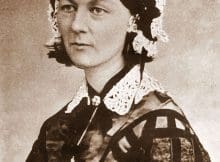 How well do you and your pupils know Florence Nightingale? - Here are 10 probing questions. See how you get on. Oh, and the answers are given below, in case you need them. As if! Q1. How was Florence Nightingale received by the doctors when she first arrived at the hospital in Scutari? Q2. Why was Florence known as the Lady of the Lamp? Q3. Gratitude to Florence came in many… Read More
How well do you and your pupils know Florence Nightingale? - Here are 10 probing questions. See how you get on. Oh, and the answers are given below, in case you need them. As if! Q1. How was Florence Nightingale received by the doctors when she first arrived at the hospital in Scutari? Q2. Why was Florence known as the Lady of the Lamp? Q3. Gratitude to Florence came in many… Read More